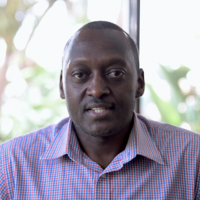
Preventing the next pandemic

Jimmy Smith
Director general, ILRI
With their experiences with Ebola and other emerging diseases, African countries are demonstrating proactive ways to manage disease outbreaks. They are applying, for example, novel risk-based rather than rule-based approaches to disease control, which are best suited to resource-poor settings, and they are joining up human, animal and environment expertise in proactive One Health initiatives.

Inger Andersen
Under-Secretary-General of the United Nations and Executive Director of the UN Environment Programme
Pandemics are devastating to our lives and our economies, and as we have seen over the past months, it is the poorest and the most vulnerable who suffer the most. To prevent future outbreaks, we must become much more deliberate about protecting our natural environment.

Delia Grace
Professor Food Safety Systems, NRI; Contributing scientist ILRI
If we want to avoid a repeat of this terrible situation, we need much closer cooperation between experts in ecosystem, animal and human health. That’s how you can create an early warning system and the capacity to detect and stop outbreaks like COVID-19 before they get out of control.

Bernard Bett
Team leader, Animal and human health
If you follow a One Health approach, you assemble a team including animal experts, human health professionals and ecosystem experts. You are aware of the evolving nature of disease risks in natural environments, especially as they are disturbed by human activity and climate change. You are conducting surveillance—in livestock, wet markets and humans—to detect the early signs of a potential outbreak. And you are working together as a team to stop it from spreading.

Doreen Robinson
Chief for Wildlife at the UN Environment Programme
While the issue is challenging one thing is clear: protecting the environment, halting habit loss and degradation, learning how to maintain natural ecosystems that sustain life on this planet –that can help protect us from enduring another crisis like the COVID-19 pandemic.
Raise awareness and increase understanding (knowledge) of zoonotic and emerging disease risks and prevention (where appropriate), at all levels of society to build widespread support for risk-reduction strategies.
Expand scientific enquiry into the complex social, economic and ecological dimensions of emerging diseases, including zoonoses, to assess risks and develop interventions at the interface of the environment, animal health and human health.
Improve cost-benefit analyses of emerging diseases prevention interventions to include full-cost accounting of societal impacts of disease (including the cost of unintended consequences of interventions) so as to optimize investments and reduce trade-offs. Ensure ongoing and well-resourced preparedness and response mechanisms.
Develop effective means of monitoring and regulating practicesassociated with zoonotic disease, including food systems from farm to fork (particularly for removingstructural drivers of emergence) and improving sanitary measures, taking into account thenutritional, cultural and socio-economic benefits ofthese food systems.
Include health considerations in incentives for (sustainable) food systems, including wildlife source foods. Augment and incentivize management practices to control unsustainable agricultural practice, wildlife consumption and trade (including illegal activities). Develop alternatives for food security and livelihoods that do not rely on the destruction and unsustainable exploitation of habitats and biodiversity.
Identify key drivers of emerging diseases in animal husbandry, both in industrialized agriculture (intensive husbandry systems) and smallholder production. Include proper accounting of biosecurity measures in production-driven animal husbandry/livestock production to the overall cost of One Health. Incentivize proven and under-used animal husbandry management, biosecurity and zoonotic disease control measures for industrial and disadvantaged smallholder farmers and herders (e.g. through the removal of subsidies and perverse incentives of industrialized agriculture),and develop practices that strengthen the health, opportunity and sustainability of diverse smallholdersystems.
Support integrated management of landscapes and seascapes that enhance sustainable co-existence of agriculture and wildlife, including through investment in agro-ecological methods of food production that mitigate waste and pollution while reducing risk of zoonotic disease transmission. Reduce further destruction and fragmentation of wildlife habitat by strengthening the implementation of existing commitments on habitat conservation and restoration, the maintenance of ecological connectivity, reduction of habitat loss, and incorporating biodiversity values in governmental and private sector decision-making and planning processes.
Strengthen existing and build new capacities among health stakeholders in all countries to improve outcomes and to help them understand the human, animal and environment health dimensions of zoonotic and other diseases.
Adequately mainstream and implement the One Health approach in land-use and sustainable development planning, implementation and monitoring, among other fields.








